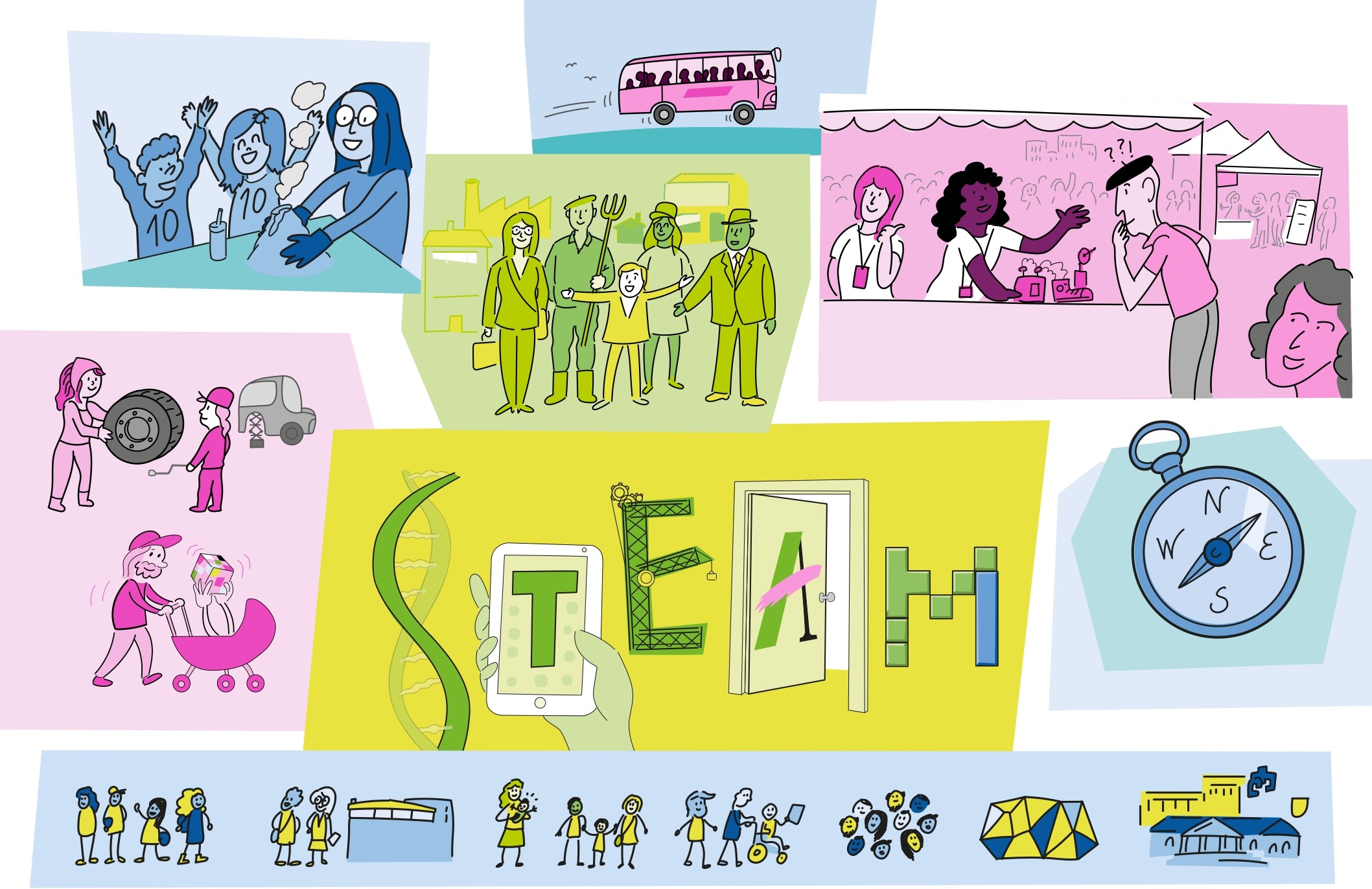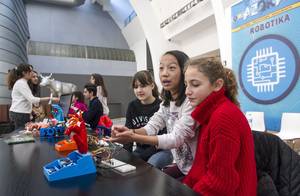A from STEAM, gateway to community creation
2020/11/23 Lasa Iglesias, Aitziber - STEAM Hezkuntza arloko arduraduna
To create STEAM experiences that help build the STEM identity of children and young people, it is necessary to have the participation of the professional STEM community and its protagonists. The Bizilabe network is an initiative beyond the classroom that facilitates this participation.

STEAM education initiatives have seen a notable increase in recent years. The interest in fostering STEM vocations or attracting, maintaining and creating talent is growing and more and more initiatives are being launched both within and outside the school setting. We need STEM capabilities to promote a sustainable world and the responsibility and critical capacity of citizens to face the great challenges we face and we need STEM professionals. However, it does not seem that young people intend to choose STEM in the future, at least enough to respond to future needs in these areas. In the case of girls, in addition, the data is even worse and it is important to delve into the reasons that hide and deal with them.
Deciphering the code: the education of girls and women in science, technology, engineering and mathematics (STEM) (2019), explains UNESCO that the stereotyped roles of STEM professions have a great influence on girls. Thus, according to the speakers, the tendency to self-choose is the main reason why girls stop choosing STEM education. This significantly affects the process of socializing gender roles and stereotyped ideas, such as stereotypes associated with gender and STEM. Following the report, gender stereotypes that express that STEM studies and careers are for men can have a negative influence among girls in terms of interest, commitment and performance with STEM, which can lead to setbacks in the professional routes related to them. Girls who acquire these stereotypes have less personal effectiveness and confidence than boys in their abilities, and personal capacity influences both the outcomes of STEM education and the continuity of STEM careers. Some studies have also shown that as age progresses, girls lose interest in STEM subjects and suggest the need to intervene in these areas in childhood to reinforce girls' interest.
The STEAM A, in principle represented Art, but now includes transversality, creativity and interdisciplinarity. That a can also be seen as a door, an open door to the community to actively participate in STEAM educational activities. And all the agents of the educational community have to do with STEAM education: families, the scientific community, companies, administration, social agents and society in general. This A allows to introduce more different profiles and professions that can contribute to the paradigm shift.
There are some proposals to address these reasons or minimize their consequences, such as practical labs and the drive for design based learning, so girls gain confidence in science and technology, and show more role models that can help break stereotypes.
STEM Identity Promotion Experiences: Model Bizilabe
The Bizilabe network of research centers for young people was launched in Bilbao in 2017 and is being extended to more than one municipality in the Basque Country, by Elhuyar and in collaboration with the municipal administrations of each locality. The aim of this network is to create an ecosystem in each region that helps and enhances contact between the STEM professional community, children, the school environment and families. By October 2020 the Bizilabe area will be operational in five municipalities.
In the Bizilabe centres, children and young people aged 10 to 19 create and experiment in an extracurricular space. This space aims to bring together science and technology, knowledge and procedures, STEM professions and their protagonists, serving as inspiration.
The methodological strategy of Bizilabe is based on the creation of experiences related to STEAM, generating spaces of encounter and positive emotions among children. It has a wide range of activities: continuous activity throughout the year, monographic workshops taught by a network of professional STEM women (most young researchers) that Elhuyar is creating, and informal activities in which the community opens its doors to meet children and young people. It is important to foster the positive image of these professions to help build STEM identity, and for this reason women who throughout the course relate to Bizilabe students have a fundamental role.
Elhuyar brings together topics and women that are a priori attractive to students and who face stereotypes, and helps the professional design their activity to make it practical and manipulative. Once the contents and their vision are defined, participating STEM women know the most important thing: to show themselves how they are, to talk about their profession, their work, their projects and their life trajectory, to show doubts and errors, to be interested in children's projects and to help demystify widespread false beliefs about STEM professions.
Other important activities are also carried out in the centers of the Bizilabe network: visits to research centers and companies of the environment, project fairs, activities of Bizilabe around 11 February to commemorate the international day of women and girls of science, participation in scientific workshops, gincanas or neighborhood parties or other activities of Science Week, celebration of the European Night of researchers, among others. All of these informal science education activities are an opportunity to address negative stereotypes or generate positive emotions related to STEAM.

Bizilabe's experience shows that the on-site and virtual visits of STEM professionals or visits to workplaces are highly valued by students and families, who believe that their children learn a lot and that Bizilabe's activity is motivating and inspiring. Also noteworthy are the profile of workshop drivers, the good atmosphere, diversity, respect and collaborative attitude. These results are an incentive to continue working in this line.
This article (or this experience) is Graó Aula de Innovación Educativa and Guix. Published in the magazines of the publishing houses Elements d’Acció Educativa in the numbers of November 2020.




